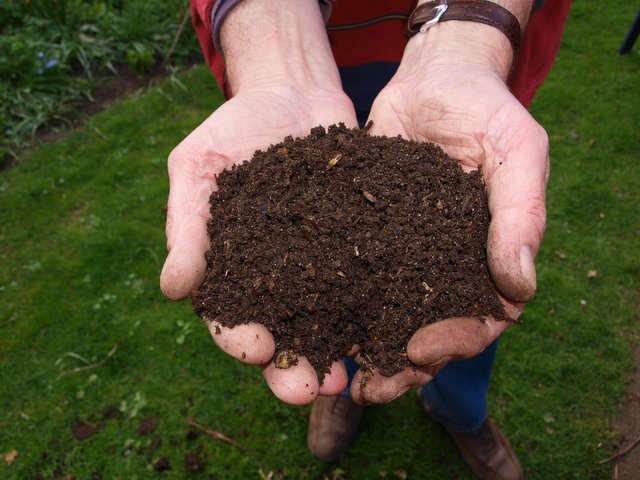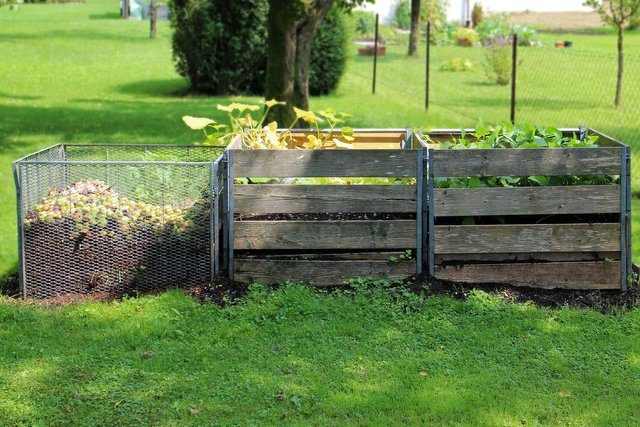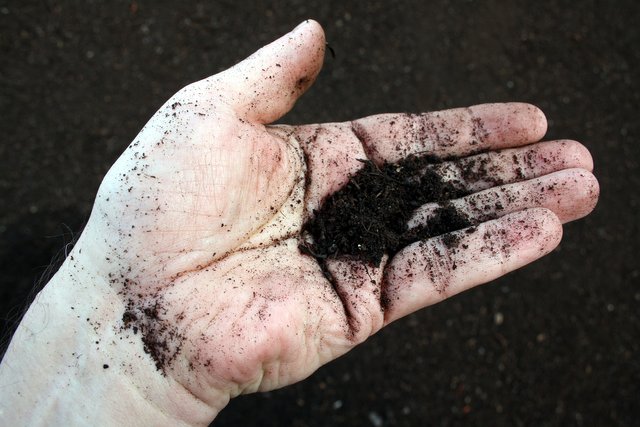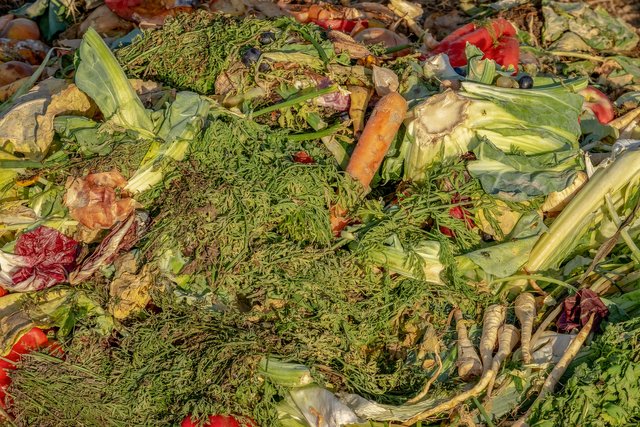Permaculture - Compost, basics (lesson 3)
Intro
As a person who loves permaculture and learns about it for years, I have decided to share with you all my knowledge gained during the volunteers on many farms from Poland and Spain to Chile and Paraguay and during my theoretical studies. Lessons will be published regularly, I share it totally for free of CC-0 license (which means you can copy my text and share it wherever you want to, without the need to mark me as an author). I hope it will bring you joy
Lesson 1- manure and liquid manure
Lesson 2 - types of manure and when to use it
The importance of fertilizing
There is probably nothing more important in the garden than the proper fertilization of the soil. It is particularly important in the initial stage of establishing a permaculture garden when we often receive poor quality land depleted by intensive monoculture crops, annual deep plowing, pesticides, and artificial fertilizers.
But how to fertilize correctly? How to prepare your fertilizers?
Let's start from the very beginning.
We divide fertilizers into three groups:
- natural fertilizers, such as manure and liquid manure, which were described in the previous two lessons
- organic fertilizers, which include mainly green fertilizers and compost discussed in today's lesson
- mineral fertilizers, for example, fertilizing calcium
HOW TO COMPOST
There are plenty of different ways how to compost. All can be described in three stages. They all start similarly:
First stage
Prepare a place for compost. In order not to make a mistake at the very beginning, remember a few basic rules:
- never close the compost on all sides. Otherwise, it will smell very bad and it may rot
- it is not allowed to cut off the access of microorganisms to the compost through the floor made of stone or concrete
- it is much better to have several smaller composters than one big one
- the place for the composter should be chosen in the sun. You have to remember to provide space for flipping it
- a ditch with compost should preferably be 90-200 cm in height and width
- the minimum size of compost in warm climates is 80 cm, in cold climates 120 cm. It is about the right space that will allow the desired high temperatures to develop freely inside the mound
- consider a composter made of a grate (whether it is a wire mesh or a wooden grate). It keeps the compost in one place, and at the same time allows the free drainage of water, collected in the rainy days
Second stage
When the place is ready, we can proceed to make a pile of several layers:
1st layer of leaves, preferably dry
- you can add small branches (max 5 cm long)
- the thickest material always lands at the very bottom of the compost
2nd layer of sawdust
Layers 1 and 2 together should account for up to 45% of the total weight of the compost
3rd layer of organic leftovers:
- cardboard
- wood ash (max 3% of the total weight of the compost)
- kitchen and garden waste
- liquid manure and manure (compost with manure)
- algae lime
- water
- hair
- feathers
- eggshells
- tea
- wool (natural or naturally dyed)
4th layer
-guano (for this purpose, it is good to have chickens. We can leave them alone with compost)
- manure residues
- bone meal and blood
points 3 and 4 should represent at least 45% of the total weight of the compost
5th layer of soil (about 10% of the compost weight), which we lightly water or cover in liquid manure
WHAT WE CANNOT ADD TO THE COMPOST:
- citrus (extremely slows down the process)
- newspapers, printed paper, white paper
- everything that is not natural
- plants infected with fungal diseases
- grass is allowed only when shredded
Third stage
The methods of composting only differ in what the third and final stage looks like, and they come down to one question:
rotate or not rotate?
Mapuche method
After a week, remove the mound, let it "breathe", then form the mound again and cover it tightly, for example with a thick foil, a thick layer of hay, or leaves. The activity should be repeated every week for about 1.5 months. After this time, the fertilizer can be sifted through the mesh to separate any undecomposed residues and use it in the garden. Frequent turning drastically reduces the waiting time for finished hummus, but its nutritional value and the amount of life it contains are reduced compared to other types of compost. The method is good for feeding the land more often, rather not suitable for depleted areas.
European method
Dig the mound once, after about two months. The fertilizer is ready to be sifted through the mesh and used in the garden after about 3-4 months. The length depends on the season.
Long waiting time, but the high nutritional value of humus.
The method of the Gardens of Gaia
Double digging of the mound, at regular time intervals. The fertilizer should be ready after 2.5-3 months.
Then there's Masanobu Fukuoka, which says "do not compost in general. Nature can cope on its own, as it does where there is no human being." I think that this approach can be used with a complex food forest (with some risk, like a greater risk of infection of trees and shrubs with fungal diseases), but not necessarily in the vegetable garden, which we use quite intensively. Also, remember that poor-quality soil regenerates itself for at least 15 years.
HOW CAN I CHECK IF THE COMPOSITE IS HUMID ENOUGH?
Regardless of the method you choose, the compost should be looked after from time to time, ensuring that it maintains the appropriate humidity.
If the compost squeezed in your hand releases a few drops of water, it is good.
When compost is too dry, it crumbles when you open your hand. It should be watered with water or liquid manure.
When compost is too wet, it will ooze. Dry components should be added.
COMPOSTING PROCESS:
- Phase one - decomposition
The temperature in the composter rises sharply, up to 70 C (with aeration even up to 90 C), thanks to the bacteria that produce heat through metabolism. In that phase, all microorganisms and weed seeds are destroyed. Depending on the material used, the process takes 3-5 weeks - Phase two - transformation
Fungi transform substances in the cooling-down compost, including those that are difficult to decompose, such as lignin and cellulose. The temperature slowly drops to around 30 ° C, the decomposed proteins are converted into nitrates. - Phase three - reconstruction
development of small animals: isopods, springtails, maggots, mites, which transform compost into the final product.
I realize that permaculture is not the mainstream hobby and many people may not be interested in reading posts related to that subject. For those of you who read it, I have the hidden contest. Answer in the comment three questions I will ask you below to get the chance to gain a small reward. First-person who will reply correctly will get 5 STEEM. From the other answers, I will randomly choose two users who will be rewarded 2,5 STEEM each. All the information I am asking you about is included in this publication.
- What ingredients from the following list should not be included in the compost: hair, lemon, tea, feathers, plastic spoon, newspaper, cardboard, old eggplant?
- How long does it take to prepare compost? What method is the quickest and why sometimes it's better to make the compost a bit longer?
- What does Masanobu Fukuoka say about composting and fertilizing in general?
Thank you for reading,
@papi.mati








You have given good information about fertilizer
Excelente explicación, espero que muchas personas se interesen en leer sobre la permacultura y se involucren en tu iniciativa!
Invito a @richerly @yulirosario27 @mirla33
gracias por su comentario! <3
Hello, @papi.mati, i have read about your writeup and have gained a lot which I could use in my small farm at the back of my house, it's actually nice you placed a mini contest here at the end, well here are my answers to the questions;
1 What ingredients from the following list should not be included in the compost: hair, lemon, tea, feathers, plastic spoon, newspaper, cardboard, old eggplant?
From your writeup, compost is made up of the following, first layer of leaves, dry leaves, a second layer of saw dust, a third layer of organic leftovers, a fourth layer of guano and lastly fifth layer of soil. From these i can say that the components of compost are organic.
Going back to the question, we may not add the following to compost;
NB; you have to be moderate with the amount of eggplant you use as their skin are tough and hard to break down and also be moderate with the lemon as too much can cause acidity which is not very helpful.
2a How long does it take to prepare compost?
This depends on the method used, for instance, the Gardens of Gaia method takes 2-3 months, the European method takes about 3-4 months while the Mapuche method takes about 1-2 months.
2b. What method is the quickest?
The Mapuche method is the quickest, it takes about 1-2 months.
2c why sometimes it's better to make the compost a bit longer?
The longer the compost the better the nutritional value of the compost.
3.What does Masanobu Fukuoka say about composting and fertilizing in general?
Masanobu Fukuoka says that it's better to not compost in general that the soil has its natural means of regeneration.
So here you have it my answers. Thanks for reading.
Thanks, the mini-contest is closed. You gained the reward.
Yes, lemons, oranges, grapefruits may slow down the composting process for few extra months so we should watch out to not compost too much of them at once.
Cardboard, as long as does not contain any print on it, is okay and when cut into small pieces, can be composted.
Tea is fine but watch out for the bags 96% of them contain microplastic.
Thank you for your participation. I already sent the reward. Have a great day and follow up next lessons for more mini-contests :)
Thanks a lot @papi.mati, your lesson was awesome and i have received the reward.
Once again, thank you 🙏.
I'll follow up for more lessons 😊.